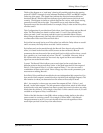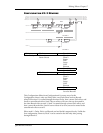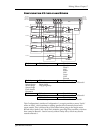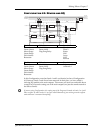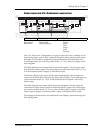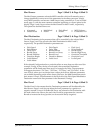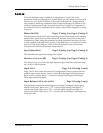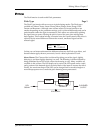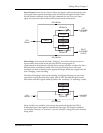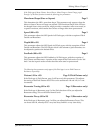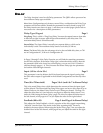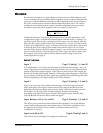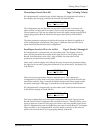
Editing Effects: Chapter 7
QSR Reference Manual 16
PITCH
The Pitch function is used to edit Pitch parameters.
Pitch Type Page 1
The Pitch Type function allows access to 6 pitch altering modes. The Pitch types
available are: Mono Chorus, Stereo Chorus, Mono Flange, Stereo Flange, Pitch
Detune and Resonator. Although some of these effects can sound similar to one
another depending on the parameter settings, each is achieved differently and can be
quite dramatic under the right circumstances. Pitch effects are achieved by splitting
the signal into two parts, effecting the pitch of one of the parts, then mixing them
back together. This eventual mixing is essential since the overall sound of the effect is
achieved by the actual difference between the normal, uneffected signal and the
effected signal.
Send1:
P ITCH πå
Type: MN CHORUS
So that you can better understand the differences between the Pitch type effects, and
therefore better apply them to your music, here is a brief explanation of each.
Mono Chorus. The Chorus effect is achieved by taking part of the signal, slightly
delaying it, and then slightly detuning it as well. The detuning is further effected by
being modulated by an LFO which causes the detuning to vary. Many variables are
available in this scheme. The LFO depth can be varied, the LFO speed can be varied,
and a portion of the detuned signal can be fed back to the input to increase the effect.
Finally, the waveform shape of the LFO can be changed from a smooth triangle to a
more abrupt squarewave to make the pitch detuning more pronounced.
LFO
DETUNEDELAY
DRY
SIGNAL
CHORUSED
OUTPUT
FEEDBACK
DRY SIGNAL



